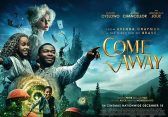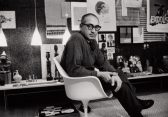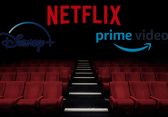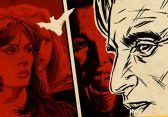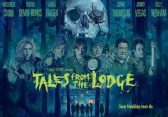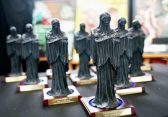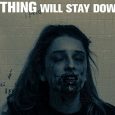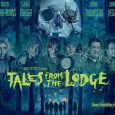With over 30 years of experience in the industry working with makeup and frequently being head of the makeup department, Donald Mowat is a highly sought after figure. Taking time out of his busy schedule, we had the privilege of speaking with Donald about his latest work on the Neil Armstrong biopic First Man, what it’s like having A-list stars personally ask for you to work with them, how CGI is affecting the practical makeup profession and the surprising things Jake Gyllenhaal gladly lets the makeup maestro do to him.
As a makeup department head on First Man, what was an average day during principal photography like? Did you complete all of your work before the cameras started rolling or were you required on set all day?
Usually. Almost all films work the same, as I’m sure you can imagine. But as far as the make up & hair department, costume, it pretty much is a Worldwide standard of most of the work happens at the start of the day. Well, the preparation of the actors and completing the overall looks of the characters happens usually before the morning rehearsals, shortly after or in between. So let’s say they want to do a rehearsal or a camera blocking at 9am, they may hold the actors and not get make-up until after that. Sometimes some directors prefer they be camera ready when they all come to set. And then throughout the day there might be make-up changes, continuity people, different actors coming in for another scene; so throughout the day the team will have various assignments according to what everyone’s doing. So let’s say Claire Foy is coming in two hours later, I have to go back and get her through, or somebody has to cover me on the set while they’re shooting.
Was there anything unique to First Man that required a different approach from any other project you’ve worked on, or was it mostly comfortable to work through?
Yes; I think what’s interesting.. y’know.. I just did a masterclass at BAFTA in September, and the thing that came up on this film is because it’s a very emotional film and it’s deep. It’s unusual, because it’s almost exclusively shot in close-up, which is unusual for a dramatic length feature film; it then becomes more documentary. Do you know what I mean? It becomes utterly, utterly intimate and ‘up close & personal’. Most people would say that, in the end, the make-up is hugely important because we’re not seeing a lot of wide-shots. We’re seeing tremendous close-ups on the cast. So that, I think, made the make-up a little more paramount. What everyone does in a film is important, but I think on some films certain crafts do have to step up and I would say, in this case, definitely make-up because it was an absolute no make-up look. There were little character progressions; some ageing, somebody who looks like they’ve been crying… that takes some more work. So I would say it was a little more detailed than people would realise because you don’t see it.

Donald applying makeup to Ryan Gosling in First Man
There is some obvious makeup work on Ryan Gosling as Neil Armstrong in scenes involving injury. But could you discuss the more subtle makeup work you did on Ryan that perhaps most people didn’t notice?
Well I do a lot of things with shadow and highlight and I aged him a little bit. You know he’s a very good looking and handsome actor and I gave him a kind of dullness to his skin, darkness under his eyes, redden them up. Sometimes I put menthol around the eyes. Same thing with Claire (Foy) – Claire is gorgeous, and I had to strip her of any falseness. Her character is a woman who might put lipstick on because the reporters are coming. But the rest of the characters are academic, middle-class, nerdy people in America, in that time frame. So it’s also depiction of the 1960’s that we don’t see very often in film.
British films, oddly enough, depict the 60’s much more the way I would depict them. If you think of the films of John Schlesinger or Peter Finch in the 60’s in the UK, the depiction is of far more ‘real’ people. In America, they tend to be a bit more… Hollywood, a bit more fashion. That’s okay as a fantasy, but I was around then; I was a little kid in the 1960’s and my mom did not look like Goldie Hawn. So I think that’s an interesting thing for the period, is that it’s authentic.

Injury detail can be seen on Gosling in this still from First Man
About the injuries in First Man, there’s a sequence where he’s burned and there’s smoke. And of course, it really demonstrates the danger. And I think that’s why he wanted to do a little more make-up than I probably would have done. Damien (Chazelle, First Man director) said “Listen, you have to see it”, because he should have been cleaned up by the time he goes home. I think we made that allowance because the audience have to understand when Armstrong’s wife and son sees him coming home and he cleans up a little, but his face is a mess. I think that was very important that you get the sense that this is real – like, going to space you could die. You could be blown up. For me, that make-up decision was a good move and a good choice on Damien’s part because I would have made it a little bit less. Sometimes you have to make a statement and the way you do it is through the make-up.
Is there any singular contribution you made to First Man that you’re most proud of? Perhaps something you believe really enriches the visual storytelling.
I would say I’m really proud of the overall palette. Of the fact that every craft worked together wonderfully – art direction, production design costume, make-up & hair, cinematography… I just feel that every craft was representing Damien, representing Neil Armstrong’s family, representing NASA. It doesn’t happen very often where it all comes together. I had a couple of moments watching the film for the first time where I thought “Oh my god, this is real. I believe it. I believe everything.” That doesn’t happen to me very often.
You’ve built a strong relationship with a number of actors, namely Mark Wahlberg while working on The Fighter, Max Payne, The Happening, Shooter and The Departed, being Jake Gyllenhaal’s makeup artist on Stronger, Nocturnal Animals, Prisoners and Nightcrawler and as Daniel Craig’s artist on Spectre, Skyfall, Cowboys & Aliens, Dream House and The Girl With The Dragon Tattoo. Do these actors specifically ask for you and if so do you get a heightened sense of accomplishment that your work is sought after?
Yes, they do. Wahlberg happened by accident though – I felt it was serendipity. The first film I worked with him on was the make-up designer and department head on The Big Hit. But then I ended up being hired up in Toronto for The Corruptor, with Chow Yun Fat that James Foley was directing. I got a call from Mark saying “Hey, I’m going to be doing this film, are you able to come and work on it with me?” and I said “As a matter of fact, I’m already on the film!” So that was great, and it meant I wasn’t being given a special favour but it really made me feel very accomplished, like ‘wow, Mark Wahlberg wants to work with me’.
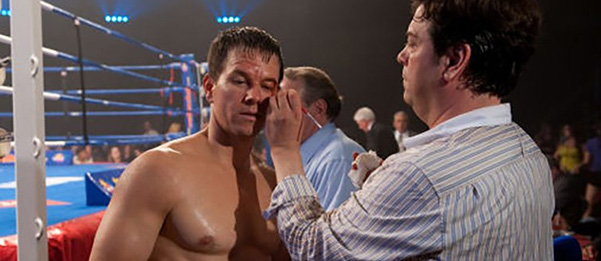
Donald and Mark Wahlberg in The Fighter.
After that, we did another film and he said “Can I just assume you’ll always come and work with me?”, which for the time being was a good idea, but there are drawbacks to that. Basically, that’s happened with a lot of people; I’d love to work with Emily Blunt again, it’s just never timed right. She’s asked me a number of times but the timing doesn’t work. I was doing Bond when she wanted me to do The Girl on the Train. Then you lose track, and that kind of happened with Mark a bit because I like him so much but then after The Fighter I just started getting called to do The Girl with the Dragon Tattoo and things with Daniel Craig and I felt like I had to move on a little. So they’re good problems; I’ll always say they’re ‘high class’ problems.

Donald and Emily Blunt on the set of Sicario.
With spending a lot of time putting make-up on the actors, are they usually understanding or are there days where they’re in bad moods?
Doing the make-up on men is particularly harder. When you’re working with girls, nine times out of ten if you’re working with a female actor you’re doing ‘good looking’ or ‘pretty’ because that’s, unfortunately, what most films are about with women. With the men, they generally get the juicier roles whether they’re getting beat up or chased or shot at and so you have a broader opportunity to do more interesting work. And the work also has to be invisible. Whether you’re covering or creating tattoos, or you’re fixing some funny skin, I think with men it’s more challenging in that sense. Sometimes if you’re doing something where they’re dirty or bloody or sweaty and it’s 4am, they’re just fed up. Y’know, they’ve had a long day and it’s uncomfortable and its cold. But I’ve been very lucky to say I’ve worked with Jake Gyllenhaal, Ryan Gosling… those guys are great. You can do anything to Jake – you can cover him in mud, you can throw stuff in his hair, you can put contact lenses in, he’s happy. He’s just so committed to doing a good job.
Ryan’s been fantastic too. In Blade Runner 2049, I put blood and sweat on him all the time and he was good to go. There are some actors I would find a little bit trying because they don’t wanna do it or don’t want to be uncomfortable. And then I just think ‘oh that’s just boring’.
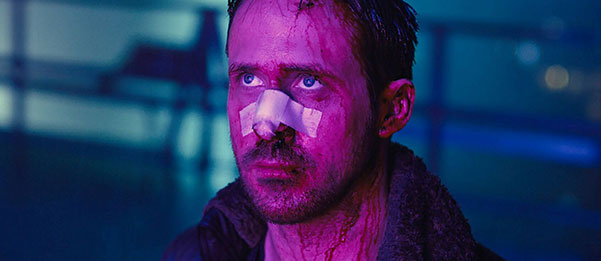
A battered Ryan Gosling in Blade Runner 2049
I think when you become an actor and you’ve got to take on that role it comes with the territory.
I think so too. But there’s also a culture of people spoiling other people and making sure they’re comfortable. I think people should make sure the crew are comfortable because no one works harder than the crew. No one. There’s no one working harder on the floor than the Sparks (electrician, lighting,etc) and Grips (camera support, rigging) and make-up and hair… no one is doing those hours or having to lug their equipment upstairs. So when the actors get a bit… whiny, I do tend to get like “enough already”, y’know? Because there’s other people who have been here making your cups of tea at three in the morning.
When you hear ‘makeup artist’, the main job sounds like it is applying it to the performers. But the role is so much more than that. Could you tell us a few other, usually forgotten or overlooked, responsibilities that your job entails?
As a make-up designer, as a department head, you’re also dealing with administration, scheduling, who you need, how you need them, what country you’re in; let’s say if a film is working between London and LA, so you really are producing you’re own department. You’re the liaison between the director and your team so it really is a much larger role than people would expect. Within that group there’s the make-up and hair designer, then the make-up supervisor. So someone making sure all of the background crowd are appropriately made up for the scenes. It’s a tremendous amount of administrative work.
Speaking of background crowds, they’re largely computer generated in modern blockbusters. With the ever-increasing reliance on CGI effects, how has this affected the role from what it was when you began in the industry?
It’s a great question actually. No matter what they do with CGI, they may create thousands or millions of people in a scene but you’re never seeing the faces. You still have to create the first 100 or 200 people. Even with CGI they may come to me and say “Don, what’s the look of these people?” because they’re creating some CGI enhancements. In Blade Runner 2049 they digitally recreated Rita, the Sean Young character, but I still had to have a physical double I made up and did the hair and everything to resemble that in order for them to create another character. It’s kind of like a tailor, isn’t it? You’re building up a rough model but you still have the elements they’re gonna borrow. I have to make sure all the background men are all clean shaved or have facial hair, that kind of thing.
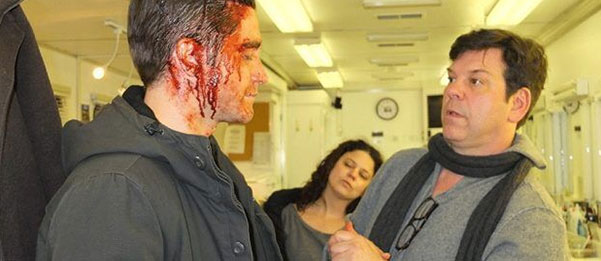
Donald checking out his handiwork on Jake Gyllenhaal in Prisoners.
The biggest issue with background crowd in First Man, you might think ‘that’s so easy, it’s 1968/69’, but all the men had brylcreemed, weekly barbered hair, clean shaved faces. It doesn’t matter if you’re in the UK, USA, Canada, you couldn’t work with a bank with tattoos on your arms; you’d cover that up. So we had to use make-up and cover those tattoos. You couldn’t have scraggly facial hair, you couldn’t have an earring. So I have to cover that up. So all the male extras had to be groomed and shaved. That takes some real skill from make-up artists who can work very very quickly, sometimes 10 minutes per person.
Are there any future projects we can look forward to seeing your excellent work in?
Velvet Buzzsaw, that’s coming out soon. It’s another film with an amazing cast and director; I worked with Dan Gilroy on Nightcrawler which is one of my favourite films. That’s coming out with Jake Gyllenhaal, Toni Collette and Zowie Ashton. That’s kind of a quirky, bizarre art film. That’s out next year. I just went in to do Jake on Spiderman: Far From Home. I wasn’t in charge on that one, but that’s released next summer. First Man is still playing in theaters so we’re doing a little promotion and maybe some awards season, some BAFTA Q&A’s and things like that.

